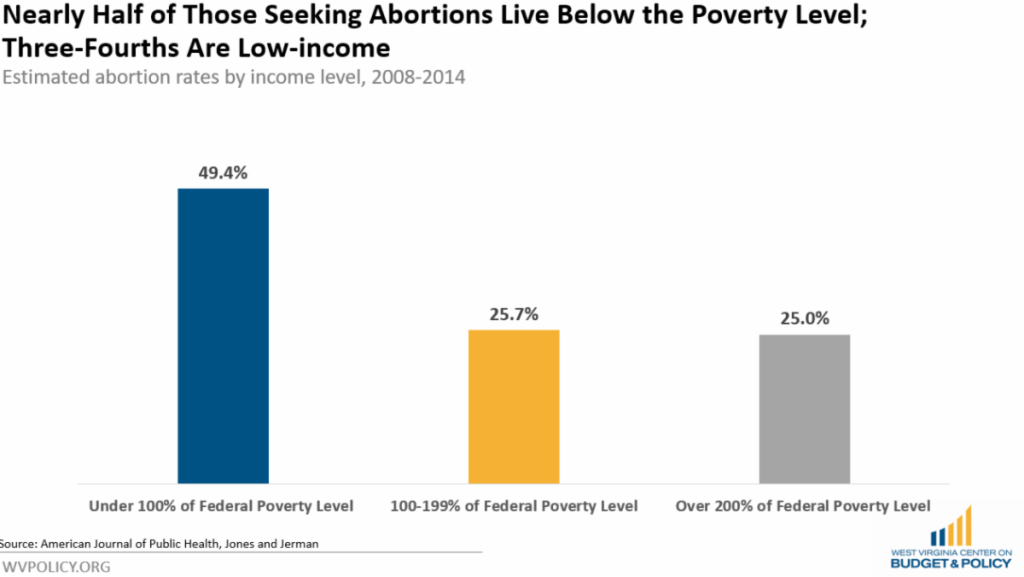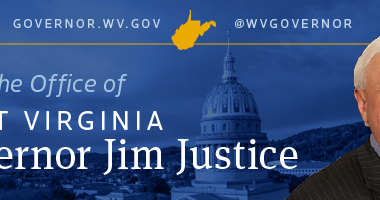By Kelly Allen
Executive Director, WV Center for Budget and Policy
Abortion is and always has been an economic issue. With Roe v. Wade expected to be overturned in the coming weeks, abortion is likely to become even more restricted or altogether banned in West Virginia. Low-income people will suffer the most.
In recent years, West Virginia lawmakers have created a landscape where pregnant people frequently find themselves in perilous health and economic conundrums where abortion is inaccessible at the same time as family, health, and economic supports that make parenting possible are inadequate.
Nationally, half of all people who seek abortions live below the poverty level and 75 percent are low-income, with incomes below 200 percent of the federal poverty line. In addition to having extremely low incomes, they overwhelmingly lack access to family and work supports like paid maternity leave. Further, 59 percent of those seeking abortions already have at least one child and 55 percent report a recent disruptive life event. This data reinforces why poorer people are more likely to seek abortions and how they will be disproportionately impacted by further abortion restrictions or bans.
West Virginia already has nine abortion restrictions in place, including a 20-week ban, a 24-hour waiting period, parental notification requirements, bans on using state Medicaid dollars to fund abortions, and bans on telemedicine administration of abortion medication. Together, these restrictions make abortion incredibly difficult to access. The number of abortions performed in West Virginia was nearly halved between 2010 to 2020. While increased access to birth control through the passage of the Affordable Care Act and the Medicaid expansion likely played a role, the number of abortions continued to decline significantly as abortion restrictions were passed.

West Virginia, and the nation as a whole, also have unacceptably high infant and maternal mortality rates. West Virginia’s overall maternal mortality rate is even higher than the national average. In 2017, West Virginia’s maternal mortality rate was 21.4 per 100,000 compared with 17.4 per 100,000 nationally. Similarly, the infant mortality rate in West Virginia, 7.02 per 1,000, is higher than the national average that same year of 5.89 per 1,000.
Over the same period that abortion restrictions were enacted at the state level, surprisingly little has been done to increase economic and health security for families and children. West Virginia does not have a paid family and medical leave policy for maternity leave or a state-level Child Tax Credit or Earned Income Tax Credit. The state also has the fourth-largest rate (nearly two-thirds) of families living in child care deserts, where child care is inaccessible for many families. And in areas where child care is accessible, it is often unaffordable, with child care in a center costing more than in-state college tuition for both infants and toddlers.
It remains to be seen how state lawmakers will proceed if given the ability to ban abortion altogether. What’s already clear is that current restrictions paired with a lack of family and economic supports are already harming low-income people. State lawmakers should resist the political urge to further attack abortion and instead focus on improving health and economic supports for families
Read Allen’s full blog post.
AUTHOR’s NOTE: The WVCBP is grateful for the critical work being done by our colleagues at the Women’s Health Center of West Virginia, the state’s last remaining abortion clinic. Their services are essential and they treat their patients with dignity and care. With the fall of Roe on the horizon, please consider supporting their work.







